Channel Islands National Park is truly a hidden gem within the national park system. While most visitors flock to California’s more famous names like Yosemite or Joshua Tree, the five islands that comprise CINP sit quietly just off the southern California mainland, as untouched as they’ve been for millennia. On your first trip, it can be challenging to determine which Channel Island to visit. This guide provides an island-by-island summary, to help you decide which isle is right for you.
Jump to:
Channel Islands National Park Overview
Getting to Channel Islands National Park
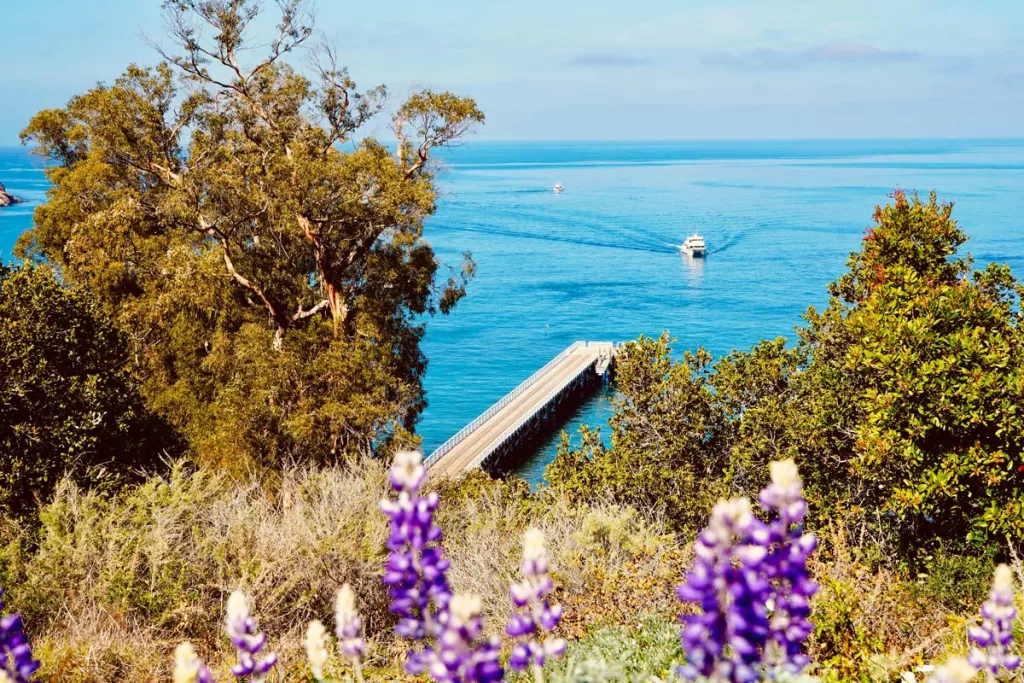
You can get to any of the five islands via ferry from Ventura Harbor. All trips are operated by Island Packers, the official boat partner of the National Park Service.
Island Packers offers year-round transportation to Santa Cruz and Anacapa islands. However, trips to the three more remote islands only run between March – November each year.
We strongly recommend booking your tickets online in advance, as ferries can sell out during the high season.
The Best Time of Year to Visit Channel Islands National Park
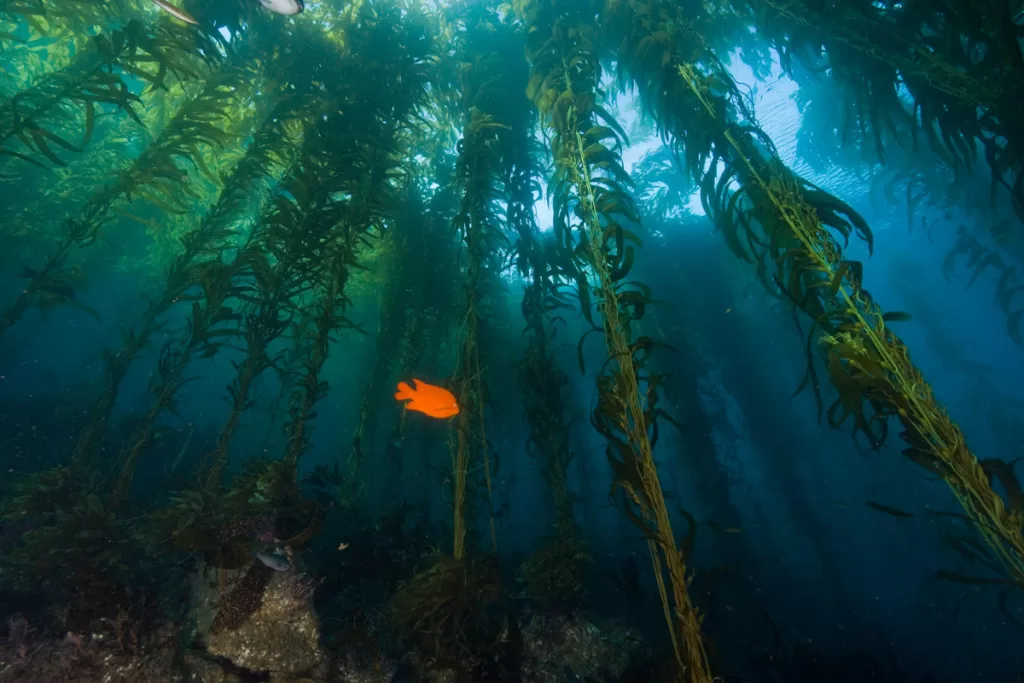
With a coastal, Mediterranean climate, weather is temperate year-round. You can usually expect the following weather patterns, depending on the time of year you go:
- April: ocean temperatures will be chilly, but hillsides should be lush after the winter rains. You’ll often see spring wildflowers blooming.
- May – June: the early summer months typically arrive with a thick marine layer, a uniquely Southern Californian weather pattern that locals refer to as “May Gray” and “June Gloom.” While temperatures aren’t necessarily cold, sunshine may not be as frequent.
- July: morning fog usually gives way to sunshine every day, although ocean temperatures don’t fully warm until later in July.
- August – October: these are the most pleasant months, with both abundant sunshine and the warmest of ocean temperatures. The water can get up to almost 70 degrees Fahrenheit in August and September.
- November – March: the weather cools to daytime temperatures in the 50s-60s Fahrenheit. Days can often be crisp and clear, although these months will be balanced with some winter rainstorms. The ferry crossing will frequently be choppier during these months, but wildflowers start blooming in February and get particularly lush in March.
As noted above, Island Packers routes to Santa Rosa, San Miguel, and Santa Barbara islands are seasonal. For those islands, off-season visits require private transportation.
Channel Islands National Park: an Island-by-Island Guide
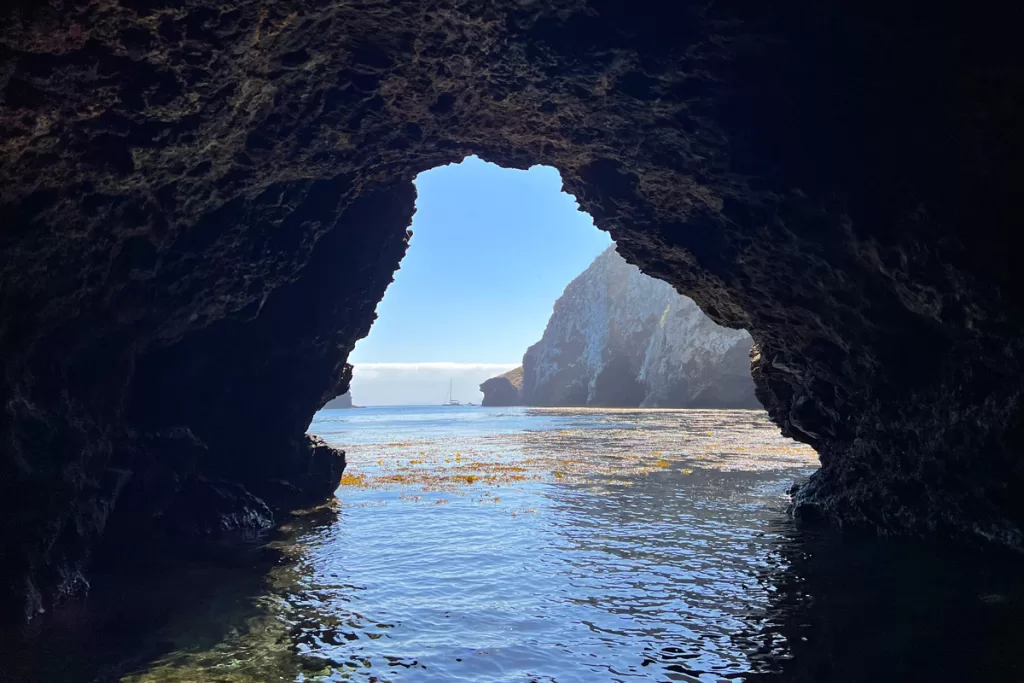
The summary below includes each island’s best attributes, along with other need-to-know details.
To better help you determine which Channel Island to visit, we’ve organized the park’s five islands from most to least visited.
Santa Cruz Island
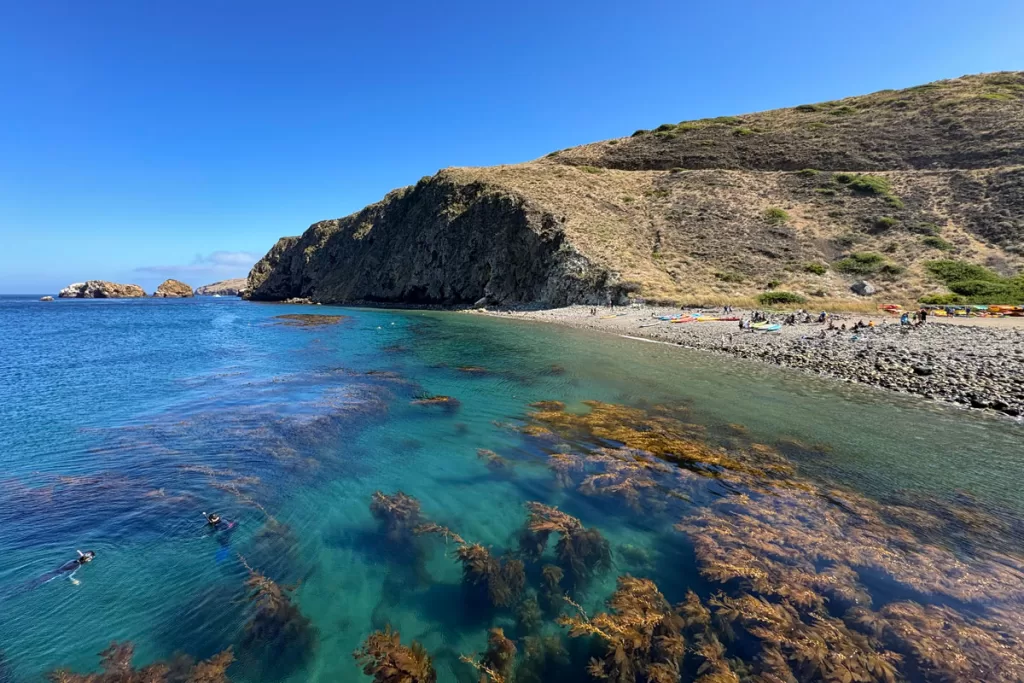
Best For: well-rounded overview, kayaking, paddle boarding, snorkeling, longer hiking, day trip, campground camping
Best Visiting Months: public transportation available year-round via Island Packers
Boat Crossing Time: 1 – 1 ½ hours
With the most amenities of any of the islands, Santa Cruz is a popular destination for first-time visitors.
Within a 0.5 mile walk of the boat dock, you can join a kayak tour or rent snorkeling gear to explore the vibrant kelp forests just offshore.
There are numerous hiking trails that lead to panoramic ocean vistas (at 5.2 miles, Potato Harbor is a common favorite). Meanwhile, the island’s visitor center is housed in an old 1880s ranch house, providing a taste of local history.
While Santa Cruz can easily be explored as a day trip, we highly recommend camping overnight for those up to the adventure. Experiencing the peace and solitude of an island evening, after the day crowds have departed, is a special treat.
Santa Cruz has the largest developed campground of any of the islands, although you still need to carry in all equipment and food. You can learn more about camping on the Channel Islands here.
Anacapa Island
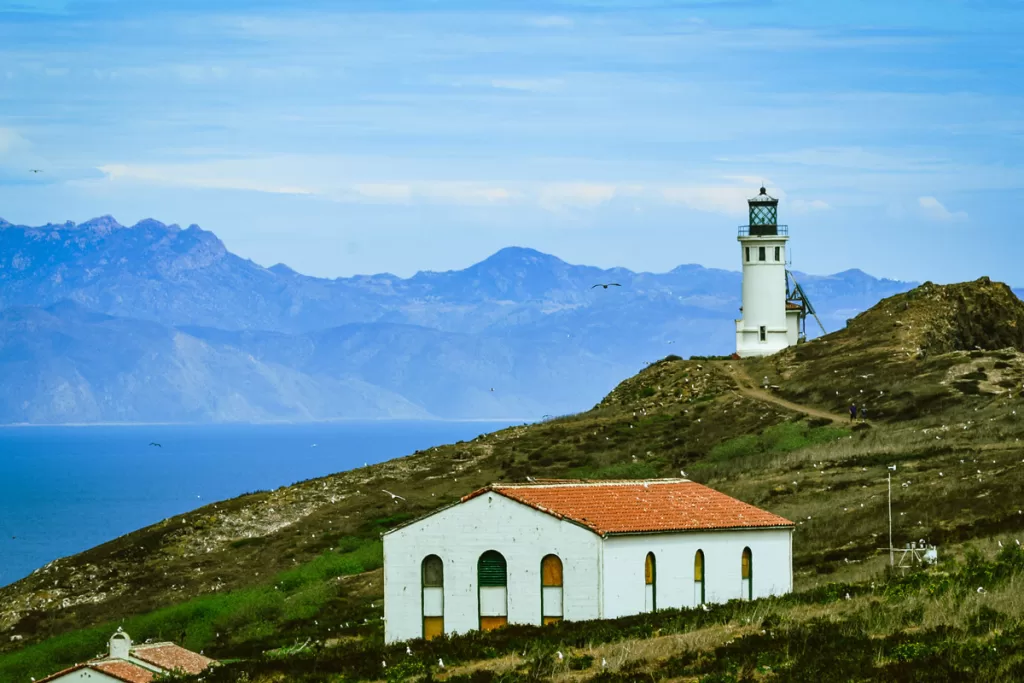
Best For: panoramic views, day trip, shorter hiking, sea caves
Best Visiting Months: public transportation available year-round via Island Packers
Boat Crossing Time: 1 ½ hours
As the smallest island in the park, Anacapa doesn’t have as many activities as the other islands (indeed, there’s just one main hiking trail, that’s only 2.5 miles long). But what it lacks in land size, it makes up in views.
Some of the most famous (and stunning) images out of Channel Islands National Park all come from Anacapa, including the iconic lighthouse (perched on a windswept bluff overlooking the ocean) and the string of small islets dotting the archipelago.
The vibrant kelp beds just offshore also make for spectacular swimming and snorkeling. Anacapa has more sea caves per mile than any other island, which makes for a truly unique adventure (however, there are no rentals available on the island, so you need to either bring your own watercraft or rent on the mainland and transport it out to Anacapa). Note that the only water access point is at Landing Cove, where you can enter the water via a dock.
Anacapa is a popular day trip alternative to the larger Santa Cruz island, although it also features a small campground with a stunning backdrop, for those wishing to stay overnight.
Santa Rosa
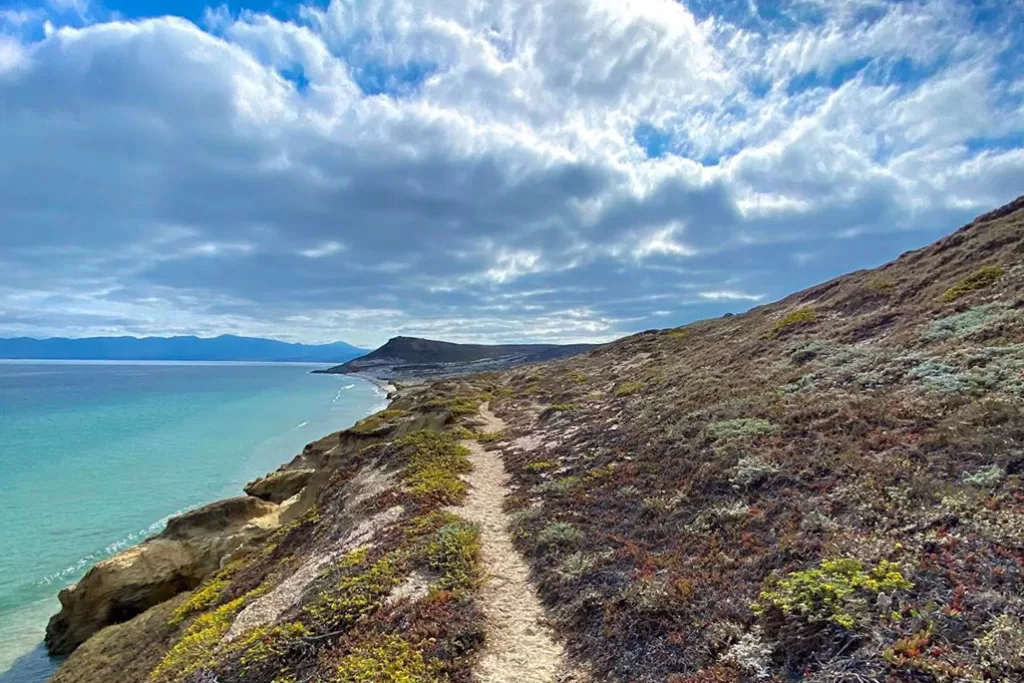
Best For: more remote hiking and camping; seal and sea lion viewing
Best Visiting Months: public transportation via Island Packers available March – November
Boat Crossing Time: 2 ½ –3 hours
The second largest island after Santa Cruz, Santa Rosa is gaining in popularity with those who desire a “wilder” version of its more visited neighbor. Here, you can experience the same activities as Santa Cruz, but on land that feels more untouched.
Highlights include numerous hiking trails ranging from 2 – 16 miles (including the 8-mile trail to Carrington Point, home to numerous seals and sea lions, a picturesque sea arch, and ocean blowhole).
There is also a historic ranch and schoolhouse museum, along with the Torrey pine, one of the rarest pines in the world. You can hike to one of just two natural Torrey pine groves in the world on the 7.5-mile Torrey Pines trail.
The beaches of Santa Rosa are some of the better ones within the park, with miles of white sand stretching to the horizon. However, they’re also a tease, as the waters are rougher here and watersports are more limited. Swimming, snorkeling, and kayaking are recommended only for the more experienced.
Campers can choose from a 15-site designated campground, tucked back into Water Canyon, or the unique opportunity for dispersed beach camping. For a limited time each year (usually mid-August to December), the National Park Service opens up the island’s entire 55-mile shoreline to backcountry beach camping.
San Miguel
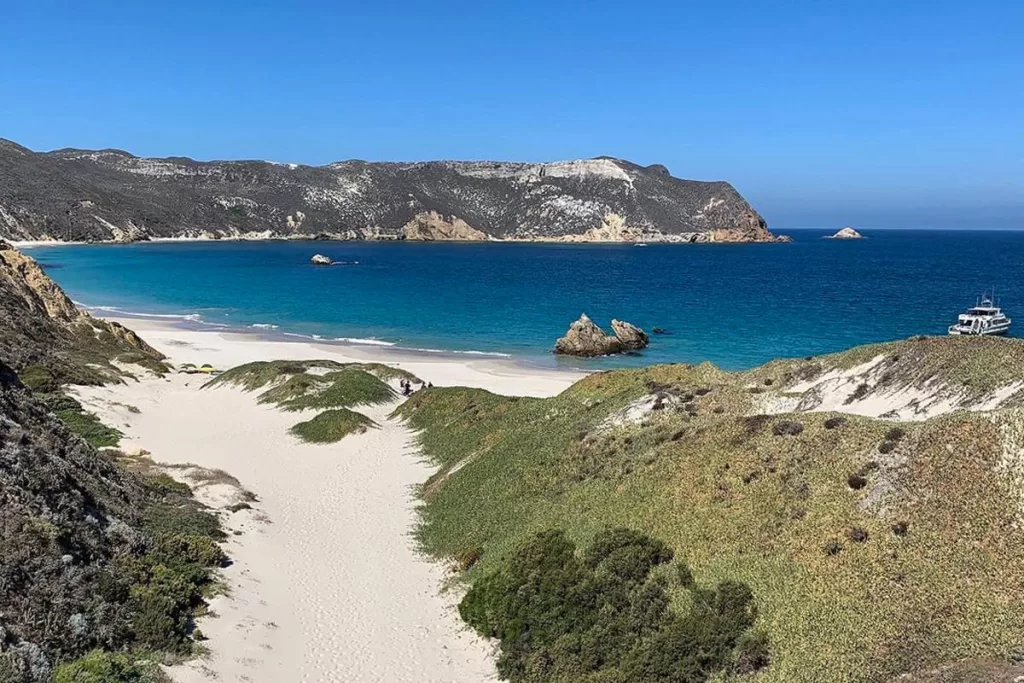
Best For: wildlife viewing, a truly off-grid experience
Best Visiting Months: public transportation via Island Packers available spring (exact date varies each year) – October
Boat Crossing Time: 3 – 4 hours
San Miguel is the furthest island in the chain, and truly feels like the end of the world. Here, its location at the edge of the continent creates wild, windswept environs that may feel desolate for some, and invigorating for others.
Independent hiking is limited to either a 1-mile or 2-mile trail, although rangers and volunteers are often available to lead guided hikes to other parts of the island. In particular, Point Bennett (a guided 16-mile hike) will bring you to one of the largest congregations of wildlife in the world.
As with Santa Rosa island, watersports on San Miguel are limited and not recommended, due to the rough conditions.
San Miguel has a small 9-site campground, where each site includes a primitive windbreak to protect you from the worst of the elements.
Note that permits are required to visit San Miguel. When you book your transportation with Island Packers, they’ll provide you forms to complete.
Santa Barbara
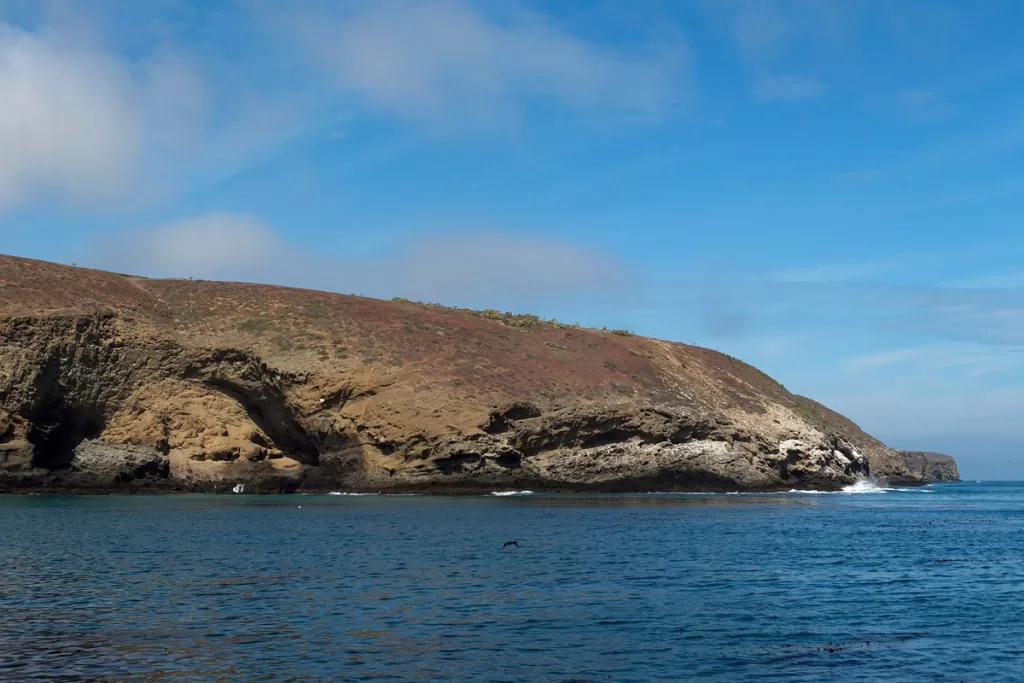
Best For: remote snorkeling and scuba diving, marine life
Visiting Months: public transportation via Island Packers hasn’t been available since a storm damaged the landing pier in 2015. However, Santa Barbara is still accessible year-round via private charter.
Boat Crossing Time: 2 ½ –3 hours
The southerly Santa Barbara sits far removed from the other islands, and offers another unique experience for visitors who truly want to feel off the grid.
This small island offers 5 miles of hiking trails, as well as a primitive 10-site campground for those wishing to experience the extreme solitude of an overnight here.
Additionally, there is a large seal and sea lion rookery just offshore that makes for spectacular diving, as you’re dropped into a pod of hundreds of playful pinnipeds.
Scuba diving is not provided through the island, so you’ll need to book an excursion in advance – you can find numerous dive operators here.
Looking to stay overnight on the Channel Islands? Check out our guide to the best campsites on each island.
